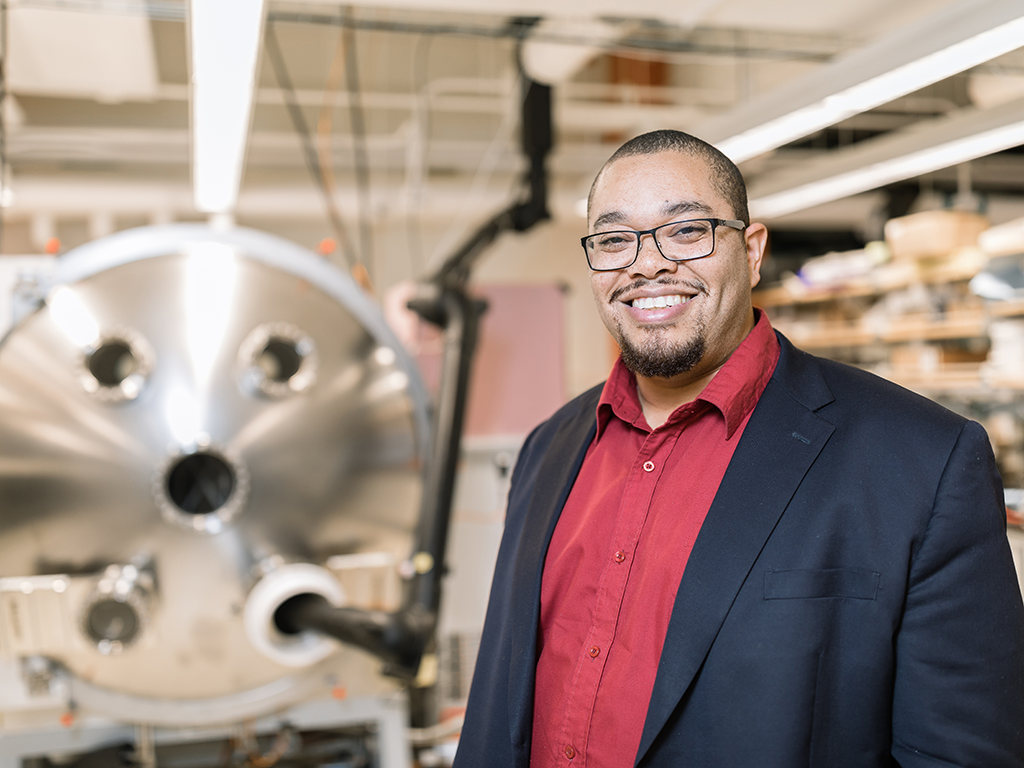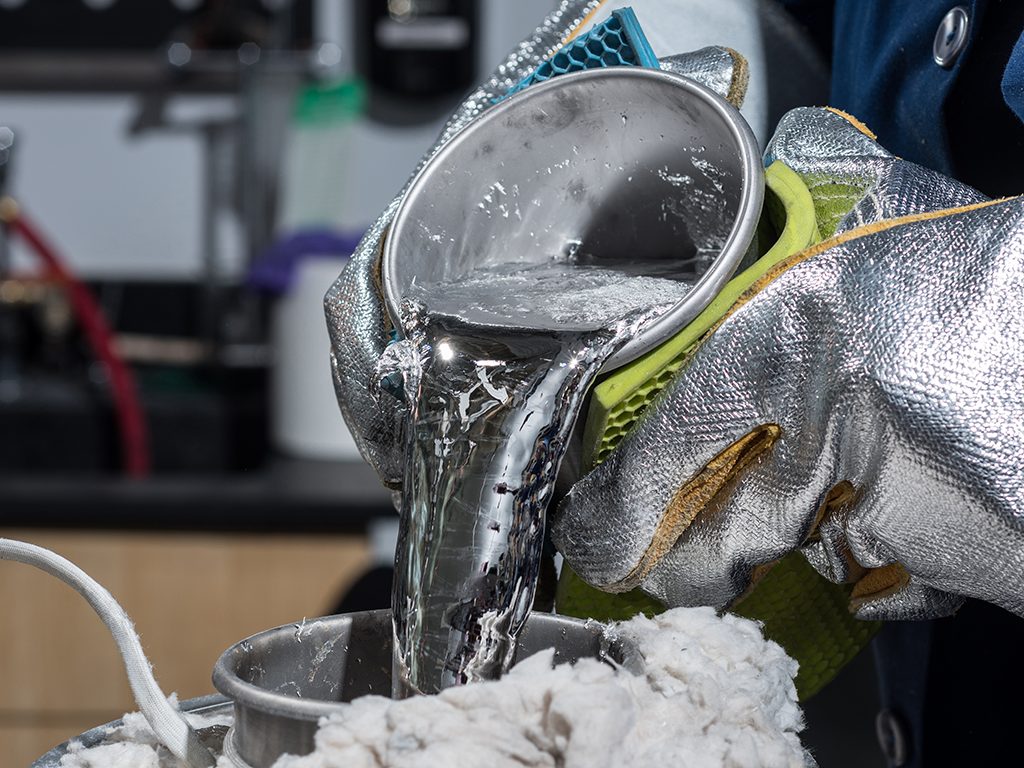Record Temperatures
Professor Asegun Henry operates at the extreme end of temperature in industrial applications
Thermodynamics started out as a field with a somewhat singular focus: motion. More specifically, mechanical motion, locomotives, and, ultimately, the conversion of heat to mechanical work. Steam engines, and the desire to better understand the forces that make them work, led to fundamental discoveries about the properties of heat and energy exchange, energy conservation, and later, to the establishment of the laws of thermodynamics.
“There was a discovery, or some understanding that you could heat up steam and the pressure would increase, and it could cause something to move,” says Asegun Henry, professor of mechanical engineering and founder and CTO of Fourth Power. “That basic physical understanding led to a whole field of trying to understand how to do it better, or control it and make it do different things, so that we could build different devices that ultimately could produce much more force, energy, and power, than any animal on Earth.”
 Speaking as a keynote panelist at the department’s 2.150 event, Henry told attendees that his work stemmed from MechE’s earliest lab, the Steam Laboratory. “I am a product of that legacy… of steam engines, and heat transfer, and thermal fluids work. I am a part of that continuum,” he said. Credit: Ryuji Suzuki
Speaking as a keynote panelist at the department’s 2.150 event, Henry told attendees that his work stemmed from MechE’s earliest lab, the Steam Laboratory. “I am a product of that legacy… of steam engines, and heat transfer, and thermal fluids work. I am a part of that continuum,” he said. Credit: Ryuji SuzukiOver the last 100 years, a broadening of both fundamental physics and materials understanding has allowed researchers to push further on temperature. As heat flows have increased by orders of magnitude, the temperatures researchers are investigating have increased as well. Today, engineers have far exceeded units like tens or hundreds of horsepower, in terms of the output capabilities of machines.
“Whenever there are two things at different temperatures, assuming these things have some means to communicate energy, there will be heat flow, a rate at which energy is transferred between these two things,” says Henry. “Heat transfer engineering is all about to what extent you can control this flow of energy and make it do things that are useful.”
Steam turbines remain prevalent in the world of power generation, producing the majority of the world’s electricity, and for good reason — degree for degree, they do offer the highest efficiency per temperature unit,” Henry says. However, major boundary conditions exist that prevent engineers from going much further.
 Molten tin stores heat and can be used to generate on-demand electricity. Credit: Rob Felt, Georgia Tech
Molten tin stores heat and can be used to generate on-demand electricity. Credit: Rob Felt, Georgia TechConceptually, the efficiency of any heat engine can increase with higher temperatures. Most of what can be done practically with heat transfer, however, is limited by materials. “We just can’t make materials that can survive and hold steam at higher and higher temperatures, so we go as high as we can [with steam] and that’s the best you can do,” he says.
Considering the constraints, he chose to ask a different question. Namely, if you were to just relinquish the constraint of materials for a moment, and say, ‘if I want to move heat from one location to the next, what would be the absolute best way to do it.’
The answer, he says, is to pump a liquid metal.
Throughout his career, Henry has made significant advances and contributions to several energy and heat transfer related fields, including: solar fuels and thermochemistry, phonon transport in disordered materials, and phonon transport at interfaces – he developed the highest temperature pump on record. The all-ceramic mechanical pump can transport liquid metal at temperatures above 1200°C. This technological breakthrough, which is recognized in the Guinness Book of World Records, was later eclipsed by pumping above 2000°C, and has opened the door for new high temperature energy systems concepts.